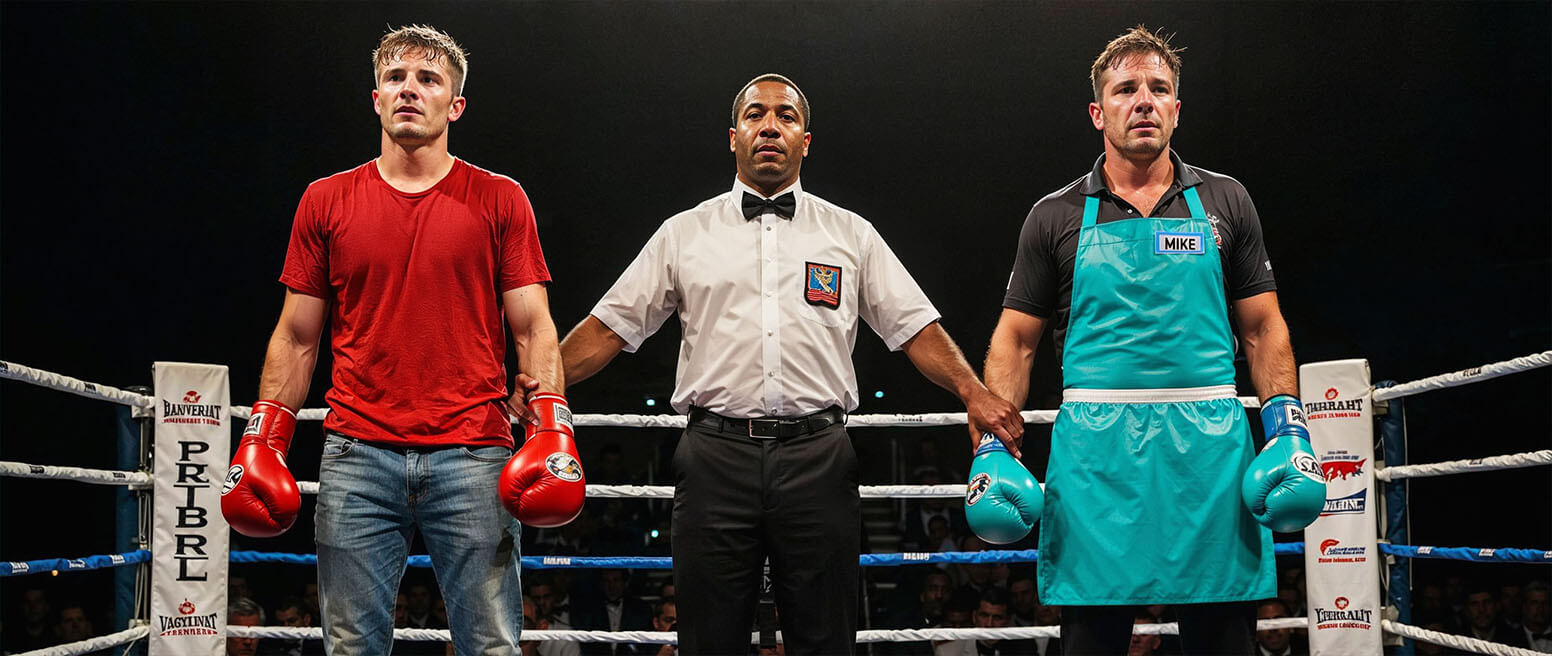A 3-Step Process to Building Out a Dispute Management System
So, let’s get this point clear right up front: there is no “one-size-fits-all” solution to dispute management.
Transaction dispute management is a delicate process. A small business catering to a limited niche has needs that are going to be very different from a mega-retailer with millions of customers. Also, deploying the wrong software or processes means wasting considerable resources. In some cases, it may even make you more vulnerable to chargebacks than before.
So, how do you find the right dispute management system for your situation? We’ll give you all the key questions you need to answer here. But first, let’s make sure we’re on the same page about what constitutes dispute management.
Recommended reading
- How Do Banks Investigate Disputes on Credit Cards?
- What Happens When You Dispute a Transaction?
- The Bank Dispute Process: A Step-by-Step Guide
- What is a Transaction Dispute? Why Do Customers File Them?
- Authorization Reversals: Lost Sales are NOT Always Bad?
- American Express Dispute Center: How to File Disputes & More
What is a Dispute Management System?
A dispute management system (DMS) is a software-based tool that merchants can use to manage the chargeback process more effectively by tracking, preventing, contesting, and analyzing disputes.
I get that the definition is a little vague. So, maybe the best way to think about this is to explain everything that a DMS should feature, and what it should help you do.
An effective dispute management system should automate a lot of the chargeback management process. It should provide alerts on incoming chargebacks, enable users to query a database of evidence related to a transaction or chargeback reason code, and let analysts quickly examine dispute trends by product, customer, geography, and more.
A DMS should feature tight integrations with existing systems, such as customer relationship management (CRM) tools and payment processing systems. This way, it can retrieve data about transaction and customer information for use during representment.
A DMS should also be capable of producing useful and relevant reporting on dispute patterns, chargeback root causes, and products or services most prone to disputes. These chargeback reports can help you track your performance in representment, evaluate the effectiveness of your chargeback management strategy, and benchmark your chargeback ratios against historical data.
Learn more about chargeback managementWhat Can a Dispute Management System Offer?
An effective dispute management system has two fundamental functions. First, you prevent disputes wherever possible. Then, you recover money from chargebacks that were filed without a valid reason through dispute representment.
Chargebacks can be incredibly expensive if left unchecked. First, you lose your revenue, along with any merchandise you’ve already shipped. On top of that, you get slammed with added fees, higher overhead, and threats to your business sustainability. As if that weren’t bad enough on its own, research suggests most chargebacks are either deliberate or accidental cases of friendly fraud.
It’s possible to manage disputes on your own. However, this gets more difficult and unmanageable as the number of chargebacks filed every month gets bigger. This is where a good dispute management system comes in handy.
What are Chargebacks REALLY Costing You?
Annual Revenue Lost:
+ Chargeback Fees:
+ Admin Fees:
+ Cost of Goods & Shipping:
Total Annual Chargeback Cost:
A well-suited DMS will save you both time and money when compared to running your chargeback management through manual, in-house processes. Having the right software, tools, and tactics in place can help you:
- Allocate staff and other resources more effectively
- Gain better insights through more accurate reporting
- Identify and address developing threats
- See long-term chargeback reduction
Service providers offer different methods of addressing these two needs. For instance, some providers only offer alerts, which are meant to intercept disputes and allow you to issue a refund before the bank issues a chargeback. Other platforms offer fully-managed options, covering the chargeback process from end to end. Still, others lie somewhere in between, offering a combination of self-managed and fully-managed options for different components.
Which Dispute Management System Works Best?
Both a SaaS tool and a fully-managed solution can work. The best option depends on your specific needs; a SaaS solution is more affordable and could be better for SMEs, while a fully-managed, end-to-end approach lets you completely outsource your dispute management function.
There’s no single answer to this question. At the end of the day, the challenge is to determine which service — or combination of services — will best fit your unique needs.
A SaaS (or “software as a service”) approach to the dispute management process is one option that merchants are exploring. Here, you license dispute management software on a subscription basis, then use that software to facilitate chargeback self-management. In contrast, a fully-managed solution lets you outsource your chargeback operations to a third party who will be accountable to you.
There are benefits to each approach.
A SaaS-enabled dispute management system offers flexibility and a lower price point, making it attractive for small- to mid-size businesses.
A fully-managed service lets you be totally hands-off with chargebacks, trusting the experts to provide a better return on your investment while you focus your attention elsewhere.
You can also take a hybrid approach, adopting complementary components of a fully-managed and SaaS strategy. Some merchants choose to use software that automatically reviews chargebacks, then outsources the representment process to a third party.
It really boils down to two questions: would you rather keep dispute management operations in-house or outsource to a professional? Which functions should be allocated to which channel?
How to Build a Working Dispute Management System
A comprehensive dispute management system must offer a solution for each of the three fundamental source of chargebacks: criminal fraud, merchant error, and friendly fraud.
Generally speaking, we can trace all disputes back to one of three fundamental sources:
AI-enabled source detection tools can help you demystify chargeback sources and pinpoint the exact cause of your disputes. After you segment disputes by their source, you can then tackle dispute management as part of a three-pronged strategy:
The Right Dispute Management System for Your Unique Needs
Ultimately, the right dispute management system for you is the one that’s best adapted to your unique needs. For instance, if you only have a small handful of chargebacks every month, you should be able to get by with an entirely SaaS-based approach. If you see hundreds of disputes monthly, though, a full-service option would be the most efficient and effective way to maximize your return.
Other important questions to ask as you develop a dispute management system include:
- Is decisioning rules-based? Any automated process you employ should be based on dynamic, and responsively-structured rules.
- Is it scalable? Your tools and strategies need to grow with you. It’s ineffective to constantly redesign your processes every few months.
- Is it software agnostic? Your dispute management system should be compatible with your other technologies.
- Does it offer relevant reporting? Accountability demands detailed, relevant reporting. It has to tell you what’s working and what needs adjustment.
Take Dispute Management to the Next Level
Remember that the points outlined above are parts of an exhaustive list. There are dozens of potential data points to gauge the overall effectiveness of your systems. In the end, you have to optimize your dispute management system according to what you’re trying to get out of it.
Of course, all these determinations ultimately boil down to one fundamental question: are you satisfied with your return on investment?
Chargebacks911® offered the industry’s first end-to-end dispute management system. Ten years later, we’re still delivering unparalleled results for our customers. From tactical dispute representment to risk assessment and dispute inquiries, we offer a multilayer strategy that’s customizable to your needs and available at a variety of service levels.
FAQs
What is the first step in dispute management?
The first step in dispute management is to establish a clear plan of action that outlines how to identify, detect, and prevent future criminal fraud, merchant error, and friendly fraud chargebacks.
Why do you need a dispute management system?
A well-suited dispute management system will save you time and money when compared to manual, in-house processes. Having the right software, tools, and tactics in place can help you identify and address developing threats, and see long-term chargeback reduction. You can also allocate staff and other resources more effectively and gain better insights through more accurate reporting.
Which dispute management systems work best?
There are generally two main categories for effective dispute management systems. First, a SaaS (software as a service) approach to the dispute management process is one option that allows merchants to license dispute management software on a subscription basis, then use that software to facilitate chargeback self-management. Second, a fully-managed dispute solution allows you to simply outsource your chargeback operations to a third party who will be accountable to you.
What makes a dispute management system effective?
Your system needs to be able to separate chargebacks by their fundamental source (merchant error, criminal fraud, or friendly fraud). To do so, there are a few things that should be baselines for your dispute management process. For example, you should embrace advanced fraud detection tools, an in-depth analysis of your internal practices, and a strategy for chargeback representment.
How do you craft the best dispute management system for your business?
The right dispute management system for you is the one that’s best adapted to your unique needs. That said, important indicators that you can use to judge the strategy’s effectiveness include rules-based decisioning, scalability, and reporting, among others.
How does a dispute process work?
The dispute process begins when a cardholder initiates a complaint with their issuing bank, claiming they were the victim of fraud or encountered product issues. The bank will then review the complaint. If the issuer deems it valid, it will send a chargeback reason code to the merchant through their acquirer.
Next, the merchant can either accept the chargeback, or contest it in representment. If they choose to fight the dispute, they will have to submit compelling evidence and a rebuttal letter to back their claim. Afterwards, the issuer will review the merchant’s representment package against the cardholder’s claims and make a ruling. The losing party may escalate the case to pre-arbitration and subsequently arbitration.














